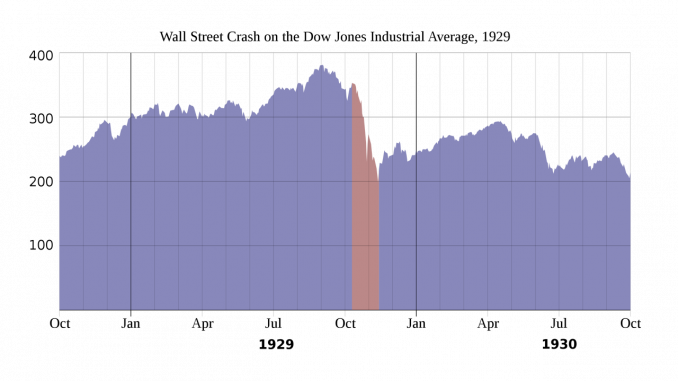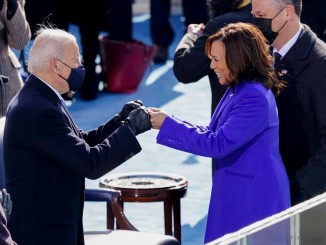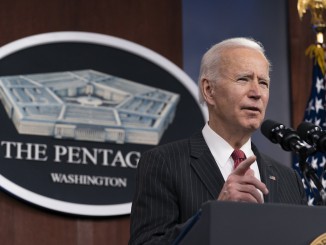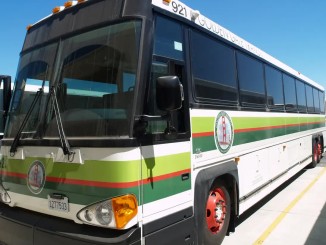
The end of October marks the anniversary of the 1929 stock market crash. The stock market plummeted on October 29, 1929, initiating the Great Depression. In the decade leading up to the crash, the United States had gone through an economic boom. The “Roaring Twenties” were a decade of record-setting wealth accumulation by the richest of the rich. World War I had recently ended, with much of Europe destroyed, providing a tremendous opening for U.S. economic growth.
But quickly the contradictions of the capitalist system began to show themselves. Economic growth and new investment were easy when the competitors in the world market were barely there, still recovering from the war. At first, the U.S. seemed to be able to expand industry without limit.
But soon enough, the U.S. and European markets were being provided with all of the goods they could sell, and new investment began to slow down. Investments could no longer bring in the same amount of profits. Instead, investors turned to speculation to make money. Investments flowed away from new production and into stocks, currency, and real estate speculation.
The rich were still getting richer but more and more of the economy was starting to be kept afloat by debt. Debt was supporting housing construction. Debt was backing consumer purchases. Debt was supporting redevelopment in Europe. The only way out of this debt-fueled economy was for new markets to open up with higher rates of profit, so investment could pour in. But that didn’t happen. The debt-backed bubble burst, bankrupting corporations and banks, and the world economy went into a massive crisis.
Over the next decade, the United States saw the worst poverty it had ever experienced. Big businesses and banks collapsed. The wealth of an already unequal society became concentrated into even fewer hands than before. Prices of goods dropped, making the selling of them unprofitable. With the collapse of business came the laying off of workers and closing of factories. Farmers were no longer able to afford their rents or taxes; many had to sell their land and look for work. Food was thrown away, left to rot in fields, animals slaughtered and burned, rather than given to the millions who starved, unable to find work. Politicians left the poor to starve. Unemployment benefits did not even exist yet; they would have to be fought for. But the politicians came to the defense of businesses and bankers as they laid people off and slashed wages.
In response, working-class people got organized. Rather than be left to die, the unemployed organized marches and councils demanding work or support. Eviction defense leagues roamed the streets, protecting anyone facing eviction, blocking the way of the police or moving furniture back in. In the poorest communities, people came together to support one another, redistributing what food and resources they had among themselves, sometimes even organizing schools, sharing meals, and holding social events, like frequent dances with live music.
Strikes spread across the country, sometimes taking over whole cities. With the system exposed, radical socialist organizations grew throughout the country. They fought for the end of capitalism and a future run by working people and for the collective good of all. Many of the fights people waged in this time were led by revolutionary activists from these organizations.
Crises like these are not random events. Many of us can remember a crash much like 1929, after the housing bubble burst in 2008. In both cases the seemingly stable capitalist economy came screeching to a halt as politicians rushed to protect banks and corporations while millions of workers were cast aside into miserable conditions. Massive economic downturns are part of the regular functioning of the capitalist system. Economists have been warning for years that at any moment our debt-ridden economy could fall into another massive crisis. Today, the insane logic of the capitalist system is being increasingly exposed, its mask ripped off, its failings no longer able to be hidden. Not only is the system headed toward another economic crisis, it has created a global climate catastrophe that threatens life itself.
Confidence in many elected officials is quickly eroding as they show themselves to be the same old protectors of the same old system, taking the side of the bosses against working people. In the Great Depression, workers responded to the crisis by waging some of the most powerful battles this country has ever seen. And the outcome of the next crisis will be determined by whether working people are able to do the same. But this time our struggles will have to go even further. This time, we have to transform the entire society to one that addresses all human needs and can face all the challenges of our time and planet.




